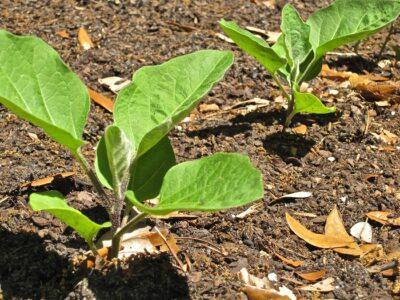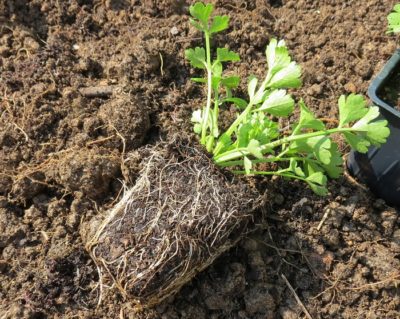Planting your garden with transplants can be a great way to start a garden early. In hotter climates especially, this can give you a head start in the growing season with your cooler weather crops. You can start seeds indoors (an excellent way to try heirloom seeds or less popular kinds) on your own or purchase transplants from the garden center. When it’s time to move your plants outdoors, their success will be due, in part, to your ability to transplant them successfully. Let me share what you need to focus on to ensure your plants get off to a good start in the ground.
1. Sheltered Introductions – Harden Your Plants Off First
If you purchase your plants from the gardening center and they are already outdoors full time, you won’t have to worry about hardening them off. But if you grew them from seeds inside yourself or they were housed indoors at the gardening center, your seedlings will need a little extra love and attention before they are ready to make it on their own. Intense sunlight, freezing temperatures, and brisk winds and rains can be too much for baby plants. Find a sheltered spot, one that gets some sunlight and is sheltered from brisk winds. Start your plants with a few hours outside the first day, and each day after add another hour or two. Check the soil in your pots and water them if dry. Plants tend to use more moisture when outside due to the wind and sun.
Order your 2014 Heirloom Solutions seed catalog and get $20 in your account!
If a seedling’s roots are poking through the bottom of the pot, consider moving it to a larger pot until it’s ready to go into the ground. By gradually introducing your plants to the great outdoors, you give them the best start possible and their chances of success increase dramatically.
2. Nutritious Environment – Prepare Your Soil
While your seedlings are hardening off, it is a good idea to prepare your soil. Along with loosening the soil up, it is a good idea to mix in some compost and even some organic fertilizer. Gardener and writer Barbara Pleasant recommends this because “both additions energize the soil’s food web, so that seedlings slipped into planting holes will be met by a welcoming committee of root-friendly fungi, bacteria and water-soluble nutrients” (Mother Earth News, 2007). Check the weather forecast and when there will probably be a few days of overcast (but not stormy) sky, move your plants into the ground. Preferably, the soil will be warm, but not hot. The day before you plant your seedlings, lightly drench them with a diluted fertilizer solution. Do this again when you put them in the soil. Add a handful of compost into each plant hole and have a watering can filled nearby and you are all set to get started!
Story continues below video
3. Gentle Planting – Handle Your Seedlings With Care
Push plants out of their pots from the bottom. Don’t pull them out by the stem as they are rather brittle. Place your fingers gently around the plant’s stem to cradle the plant as you push it out of the pot from the bottom. Gently tap or shake the pot to loosen the roots. For especially stubborn roots, you may need to use a knife to help pry them loose. Then, keeping contact to a minimum, place the plant in its hole. Position a plant by its soil and root ball and use the plants bottom leaves to maneuver it if you have to since if these bottom leaves break off it won’t harm the plant. If a tight root mass has developed, you can encourage the plant to send roots out by gently teasing a few loose. After the plant is firmly in its hole with dirt gently packed around it, water the plant. Be careful that you don’t water too quickly and wash soil away from the stem and roots. If this happens, gently add more soil. Watering helps remove any excess air pockets and encourages beneficial microorganisms to move into the plants rhizosphere helping get the plant off to a great start!
4. Offering Protection – Cover Plants
If you hardened your plants off well, they should be good to go. Some wilting may occur immediately after planting, especially if it’s hot out. If roots were disturbed during planting (i.e. if you had to pull two closely intertwined plants apart), covering the plants can help protect them while they heal and grow. Make sure your plants have plenty of water and are protected from intense sun and wind for a few days. You can use large upturned flower pots, baskets, buckets and even cardboard boxes and other similar sized containers to give them a little protection while they adjust to their new home. In a few days your plants will be stronger and ready to make it on their own. Continue to monitor moisture and fertilize as necessary. Happy gardening!
Sign up for Off The Grid News’ weekly email and stay informed about the issues important to you
 Off The Grid News Better Ideas For Off The Grid Living
Off The Grid News Better Ideas For Off The Grid Living






